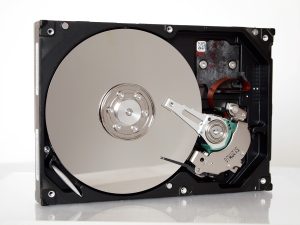Magnetic Levitation: Personal Transport Pods
Transportation technology has been constantly evolving, with new innovations aimed at providing efficient and comfortable means of travel. One such innovation that has caught the attention of many is magnetic levitation or maglev technology. This futuristic technology has the potential to revolutionize personal transportation with its fast and efficient personal transport pods. In this article, we will delve into the world of magnetic levitation and its use in personal transport pods.
Magnetic Levitation: An Overview
Magnetic levitation, also known as maglev, is a transportation technology that uses magnetic forces to suspend and propel vehicles. Unlike traditional transportation methods, such as wheels on a road or wings in the air, maglev vehicles do not make physical contact with the ground or track, which eliminates friction and allows for high speeds.
The concept of magnetic levitation has been around since the early 20th century, but it wasn’t until the 1970s that the first commercial maglev train was developed and tested in Japan. Countries like China, South Korea, and Germany have also invested in maglev technology, with plans to use it for high-speed train systems. However, the latest application of maglev technology is in personal transport pods.
Personal Transport Pods
Personal transport pods, also known as personal rapid transit (PRT) systems, are small, automated vehicles that can carry a limited number of passengers. These pods operate on a network of tracks or guideways, allowing them to travel at high speeds without facing any resistance from friction. With the help of maglev technology, these pods are suspended and propelled using magnetic forces, making them faster and more efficient than traditional modes of transportation.
The idea of personal transport pods has been around since the 1950s, but it is only now that maglev technology has made it a viable and practical option. These pods can be used for short-distance travels, such as within cities or between airports and nearby cities, making them an excellent solution for reducing traffic congestion and improving transportation efficiency.
The Advantages of Maglev Personal Transport Pods
There are several advantages to using maglev technology for personal transport pods:
1. Speed
Maglev personal transport pods can travel at speeds of up to 600km/h, making them faster than any other mode of personal transportation currently available. This is because they don’t face any friction from physical contact with the ground, and can instead take advantage of electromagnetic forces for propulsion, resulting in a smoother and faster ride.
2. Energy Efficiency
Since maglev pods use electromagnets to propel them, they do not require any fuel. This makes them environmentally friendly and energy-efficient compared to traditional modes of transportation, such as cars and airplanes. Moreover, the energy used to power maglev systems is generated from renewable sources, reducing the carbon footprint of these pods even further.
3. Safety and Comfort
Maglev personal transport pods operate on a dedicated guideway, away from other modes of transportation, ensuring safety and reducing the risk of accidents. Additionally, since they travel at high speeds, they can quickly transport passengers to their destination, reducing travel time and providing a comfortable and hassle-free experience.
4. Cost-Effective
Maglev personal transport pods are relatively cost-effective compared to other modes of personal transportation. Due to the lack of physical contact with the ground, there is minimal wear and tear, resulting in lower maintenance costs. Moreover, the energy efficiency of these pods also translates into lower operating costs in the long run.
The Future of Personal Transport Pods
The integration of maglev technology into personal transport pods is still in its early stages, but it has shown enormous potential. Companies like Virgin Hyperloop and SkyTran are already working towards implementing maglev PRT systems in major cities, and it won’t be long before we see them in action.
With advancements in technology, it is even possible to envision a future where personal transport pods operate on a network of underground tunnels, providing a fast, energy-efficient, and convenient mode of transportation for urban dwellers.
Conclusion
Magnetic levitation technology has always been viewed as a futuristic concept, but with the development of maglev personal transport pods, it is quickly becoming a reality. These pods offer numerous advantages over traditional modes of personal transportation, making them a promising solution for efficient and sustainable urban transportation. As we continue to innovate and push the boundaries of technology, we can expect to see more advancements in maglev personal transport pod systems in the near future.











